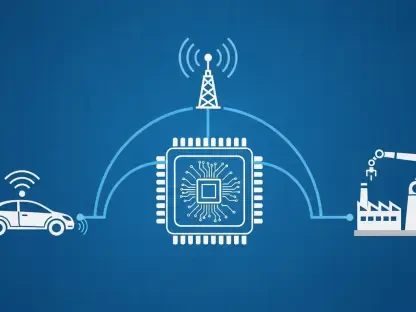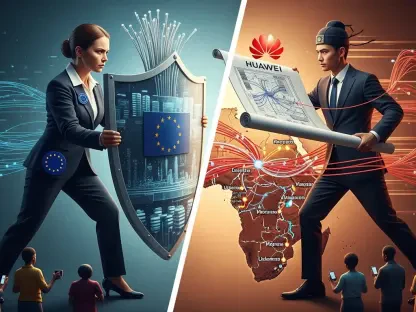The integration of Artificial Intelligence (AI) with 5G-Advanced (5G-A) is setting the stage for monumental changes in network capabilities and revenue generation. As we stand on the brink of an intelligent era, the combined potential of these technologies promises to revolutionize human-machine interactions, content production, and user experiences. The amalgamation of AI and 5G-A is expected to drive unprecedented double-digit growth in both Data of Usage (DOU) and Average Revenue Per User (ARPU) from mobile subscribers. As carriers navigate this transformation, they are compelled to enhance their infrastructure dynamically to leverage these technologies effectively.
The Dawn of an Intelligent World
AI advancements are rapidly transforming human-machine interaction (HMI). From simple text-based communication to more intuitive modes like voice commands and gestures, this progression demands real-time network capabilities to ensure seamless user interactions. Networks are under increasing pressure to enhance their latency performance to support these sophisticated applications effectively. AI-powered applications, such as voice assistants and avatars on cloud phones, necessitate networks to integrate cutting-edge technologies like Control and User Plane Separation (CUPS) and Guaranteed Bit Rate (GBR). The deployment of 5G-A is expected to support these advanced HMI applications, offering lower latency and higher reliability, thus providing a frictionless experience for users.
The more intuitive modes of interaction are not merely limited to voice and gestures; they extend to the usability of AI-powered avatars and other virtual entities that demand real-time processing and response. These advancements promise to revolutionize the way humans interact with machines, making interfaces more natural and user-friendly. The increased reliance on AI for these tasks underscores the necessity for networks to innovate continuously, ensuring that latency issues do not hinder the user experience. As AI and 5G-A converge, the future of human-machine interactions is set to become more immersive and intuitive.
AI’s Influence on Content Production
AI is redefining content creation, enabling the generation of extensive 2D and 3D videos through technologies like AI-Generated Content (AIGC). With AI enhancing content recommendations, personalized distribution becomes more effective, driving a substantial increase in network traffic. This surge in traffic underscores the urgent need for expanded network capacity and improved bandwidth. Carriers must prioritize strengthening their uplink and downlink capabilities to manage the growing demands driven by AI-generated content.
Content production is seeing a quantum leap with AI technologies that not only automate creation but also optimize the distribution of personalized content. AI’s ability to generate detailed video content and enhance recommendation algorithms ensures that users receive highly tailored media, which in turn leads to increased consumption and higher traffic. The precision in AI-generated content recommendations significantly boosts user engagement, setting higher benchmarks for network speed and capacity. Carriers face the challenge of accommodating this surge by expanding their spectrum availability and enhancing bandwidth to support the proliferation of high-quality, AI-driven content efficiently.
Experience-Centric Network Coverage
To support AI-powered cloud and mobile devices, experience-centric network coverage is becoming essential. Comprehensive and reliable access to cloud computing power is critical for intelligent applications, including those in vehicles, which require extensive coverage across diverse environments. Extensive network deployments and expansions are necessary to ensure smooth and uninterrupted experiences for numerous new connections and Internet of Things (IoT) devices. This shift aims to maintain high service quality even in the face of increasing connectivity demands.
The rise of AI-powered applications in vehicles and other mobile environments requires networks to deliver consistent and reliable coverage. Intelligent applications demand uninterrupted access to cloud computing power, which is crucial for real-time data processing and functionality. With vehicles and other mobile units traversing diverse terrains, the necessity for robust network coverage becomes even more pronounced. Carriers are compelled to invest in extensive network expansions to ensure that all new connections, including IoT devices, maintain high service quality. As the network continues to evolve, prioritizing experience-centric coverage will be key to supporting the plethora of AI-driven applications emerging across different sectors.
Application-Oriented Operations and Maintenance
The proliferation of AI applications is adding complexity to networks, necessitating a shift towards application-oriented Operations and Maintenance (O&M). Huawei is championing this transition with AI agents capable of predictive personalization and fault detection. By moving from a resource-oriented to an application-oriented approach, carriers can enhance network efficiency and user experiences, making management and maintenance processes more streamlined and effective. Application-oriented O&M is focused on optimizing networks to meet the specific requirements of AI applications, ensuring smoother performance and reducing downtime.
The shift to application-oriented O&M is a significant step toward dealing with the increasing complexity of modern networks. AI agents offer predictive personalization capabilities that can anticipate user needs, detecting faults before they impact service quality. By analyzing traffic patterns and performance metrics, these AI systems contribute to making O&M more proactive and tailored to the demands of AI applications. As AI continues to revolutionize numerous aspects of daily life, networks must adapt their management strategies accordingly. The ability to optimize operations based on application requirements translates into superior network efficiency and enhanced user experiences, underscoring the importance of this strategic shift.
New Business Models in the AI Era
The advancements in AI and 5G-A networks are opening up new revenue-generating opportunities for carriers. Exploring monetization strategies based on network capabilities such as speed and latency is becoming increasingly viable, catering to niche markets like business travelers and live streamers. Additionally, leveraging network capabilities through Open APIs enables carriers to tap into the B2B2C market. Collaborations between carriers and industries, as seen with AI New Calling services in China, illustrate the potential for increased revenue through innovative service offerings.
Carriers are now looking at innovative business models that capitalize on enhanced network abilities driven by AI and 5G-A deployments. By offering services tailored to specific user needs—one example being high-speed, low-latency connectivity for live streamers—carriers can effectively monetize these capabilities. Furthermore, Open APIs present opportunities for carriers to enter the B2B2C market, enabling collaborations that drive new revenue streams. The example of Chinese carriers offering AI-enhanced calling services demonstrates the financial potential of such initiatives. As carriers continue to evolve their services and collaborations, the AI era promises lucrative opportunities grounded in technological advancements and user-centric design.
MWC Barcelona 2025 highlighted Huawei’s leadership in 5G-Advanced deployment and AI integration, showcasing their latest products and solutions. These technological advancements are poised to reshape networks and business models, driving a significant transformation in the telecommunications landscape.
Conclusion: Comprehensive Outlook and Collaborative Efforts
The integration of Artificial Intelligence (AI) with 5G-Advanced (5G-A) is poised to bring significant changes to network capabilities and revenue generation. We’re on the verge of an intelligent era, and the combined potential of these technologies is set to transform human-machine interactions, content creation, and overall user experiences. The merger of AI and 5G-A is anticipated to drive remarkable double-digit growth in both Data of Usage (DOU) and Average Revenue Per User (ARPU) for mobile subscribers. As mobile carriers navigate through these changes, they are compelled to dynamically enhance their infrastructure to fully exploit these technologies. This means investing in smarter, more efficient network solutions that can handle higher data loads and provide better, more personalized service to users. The future of connectivity, therefore, hinges on the successful integration of AI with 5G-A, offering endless possibilities for innovation in how we interact with technology. It’s a significant step towards a smarter, more connected world.









